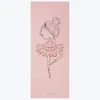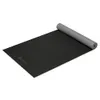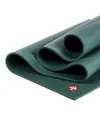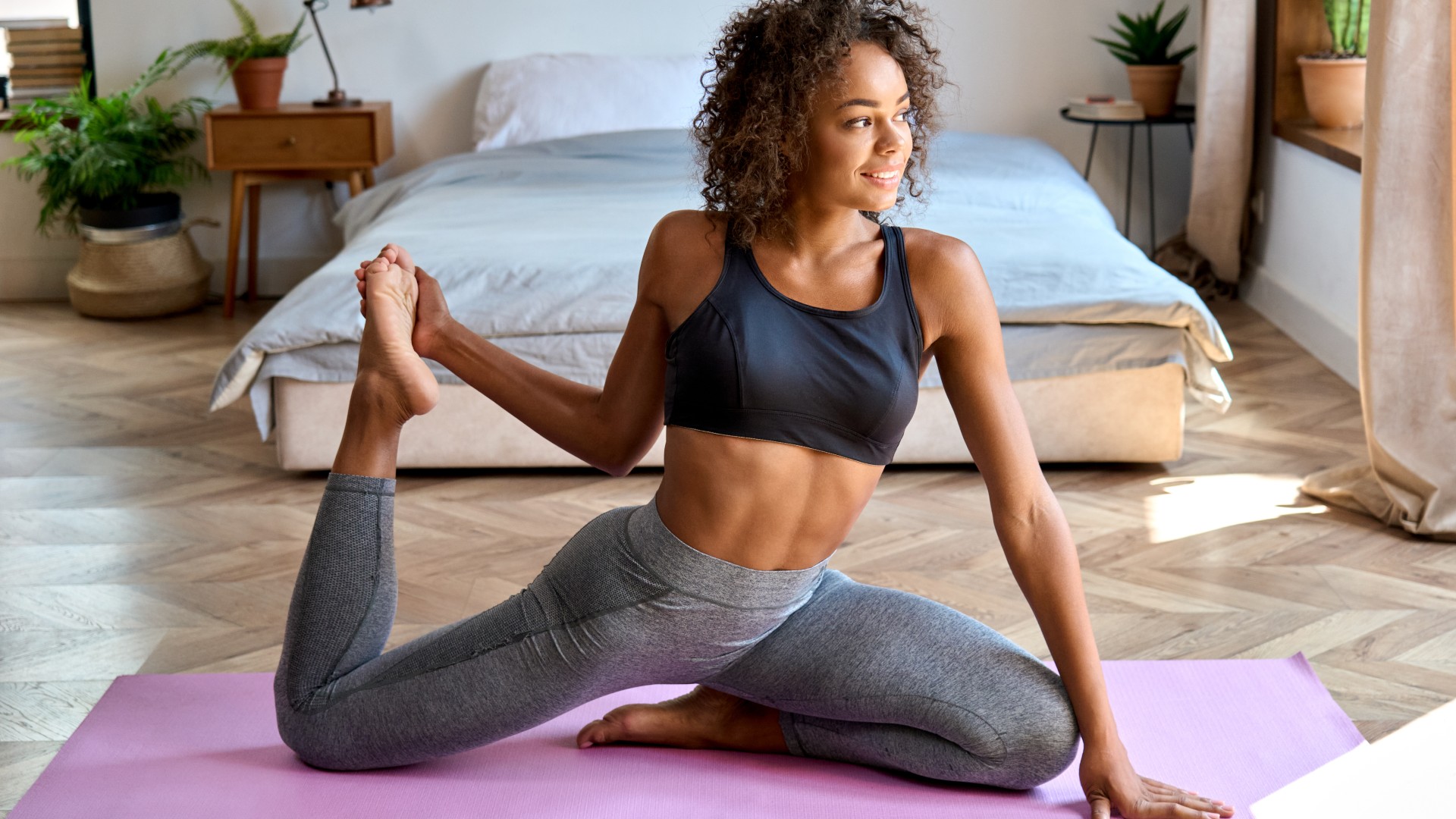
If you struggle to find depth in your squats, your lower body might need a mobility boost, so here’s a four-move stretching routine you can try to increase your range of motion and build a more resilient body.
The “Live Below Parallel” stretching series by Pliability comprises two sessions per week across a three-week series, helping to improve squat depth by focusing on areas like your ankles, knees and hips, which are often responsible for limiting it. Following the series, every squat should be “deeper, stronger, and more fluid,” but remember to keep up the routine as you progress to see the best results.
Below, we dive into four exercises plucked from the series, how to do them and the benefits.
What is the 4-move lower-body stretching routine?
This routine takes just 23 minutes and focuses on releasing tension from tight areas such as your hips, knees and ankles. Over time, these stretches could build lower body flexibility and help you find a better range of motion during squats. You only need one of the best yoga mats and your body weight.
Want to live below parallel? Here’s how.
1. Lizard
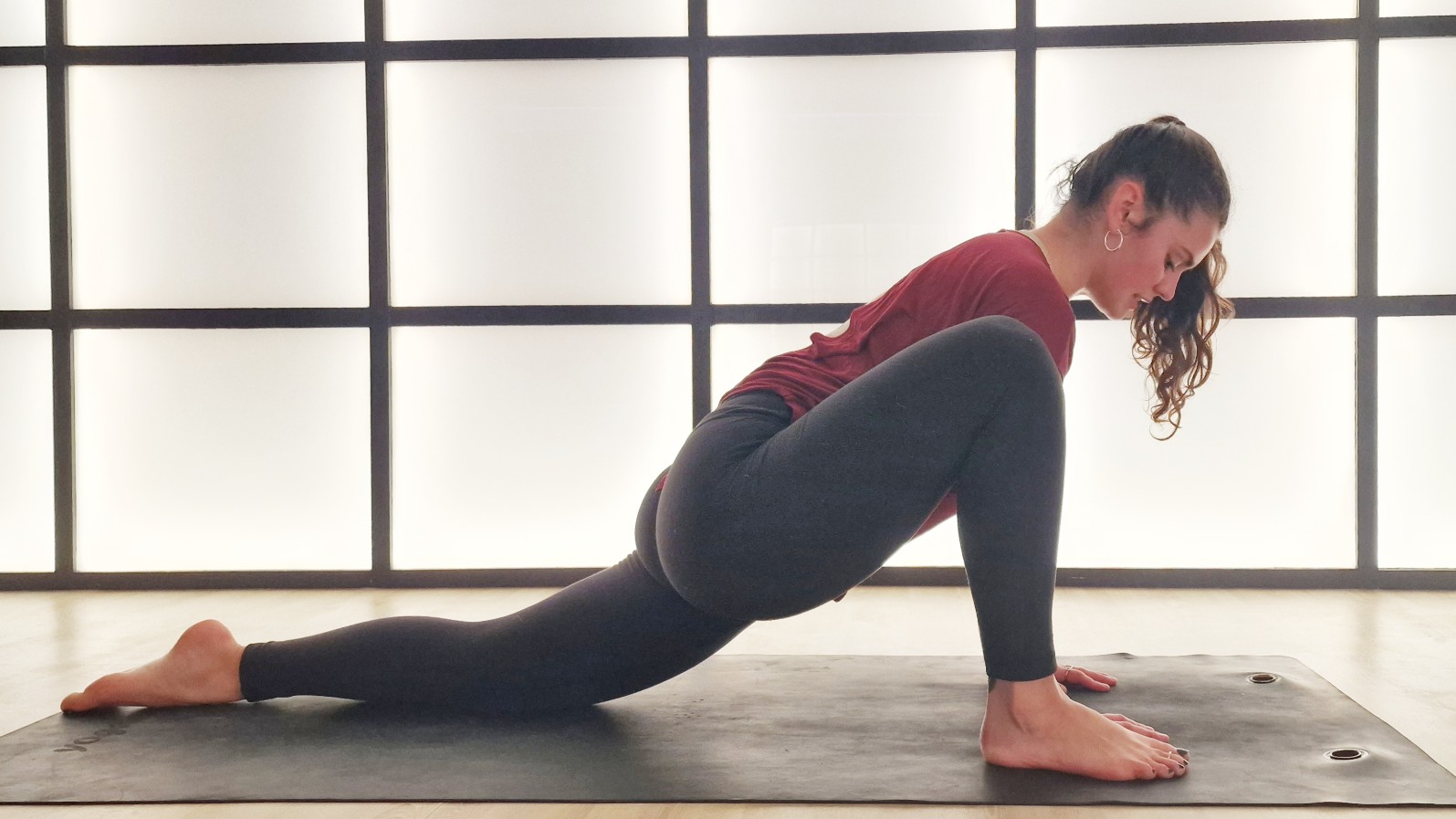
Here’s how to do a lizard pose in more detail.
- Start with your right leg forward and left leg extended behind you in a low lunge position
- Keep your right knee stacked over your right ankle, then gently guide your right knee forward until you feel a stretch in your right glute and left hip flexor and quad
- Position your hands to the inside of your right leg close to your right foot and press the top of your left foot into the mat. Support your left knee on a block or rolled towel if you prefer
- Lower your elbows to the floor for a deeper stretch
- Hold for 2 minutes, then switch sides.
2. Bound angle
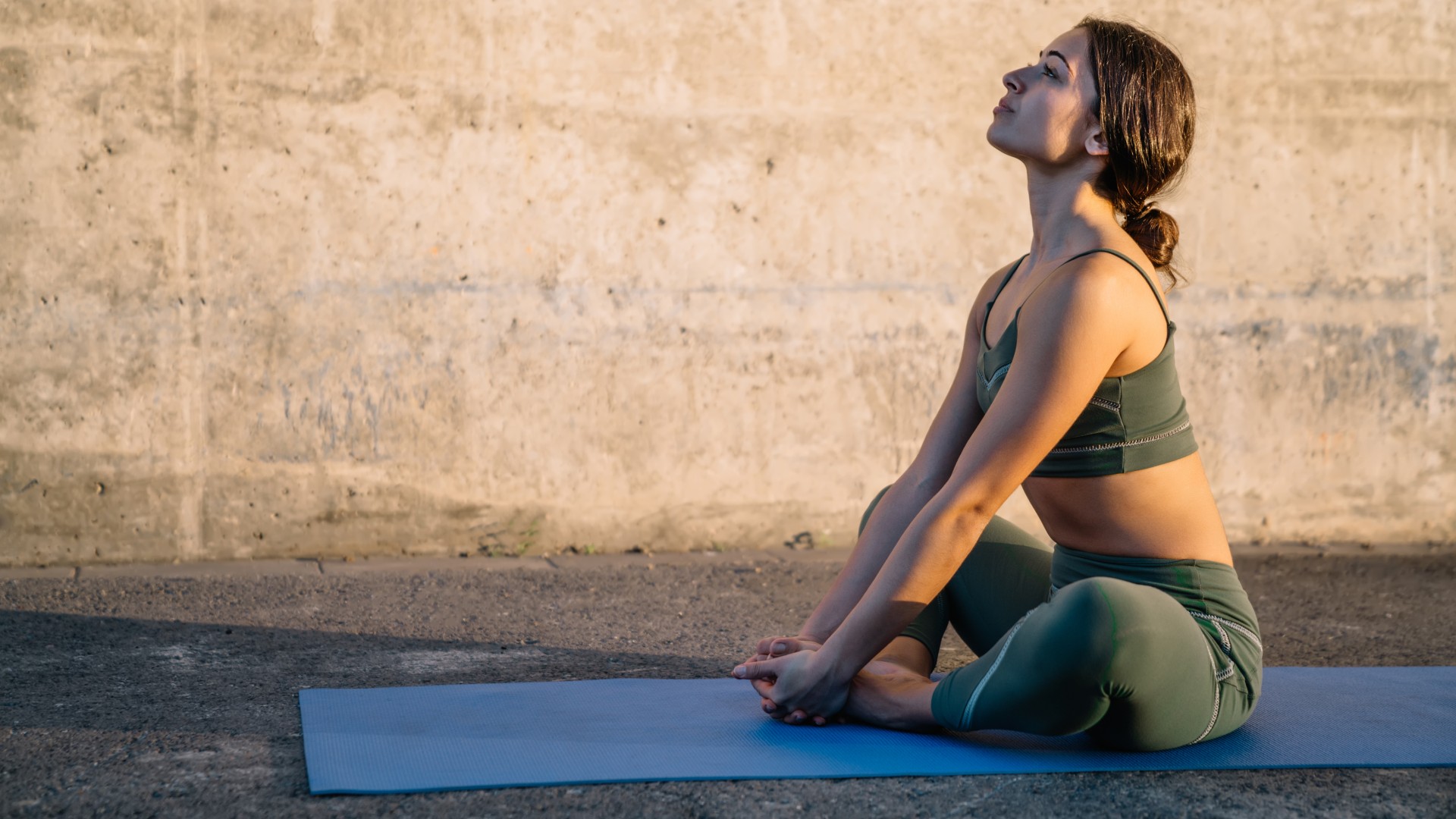
Bound angle is also known as a butterfly pose. Here’s how to do a butterfly pose in more detail.
Sign up to get the BEST of Tom's Guide direct to your inbox.
Get instant access to breaking news, the hottest reviews, great deals and helpful tips.
- Sit on your mat and bring the soles of your feet together
- Allow your knees to fall open without forcing them down
- Keep your spine neutral by sitting tall, finding length and relaxing your shoulders away from your ears
- Slowly lean forward to fold your chest toward your thighs
- Grip the outer feet and bend your elbows to help guide your chest forward. If you can, lower your elbows to the floor in front of your shins
- Close your eyes and hold for 2 minutes.
3. Pigeon
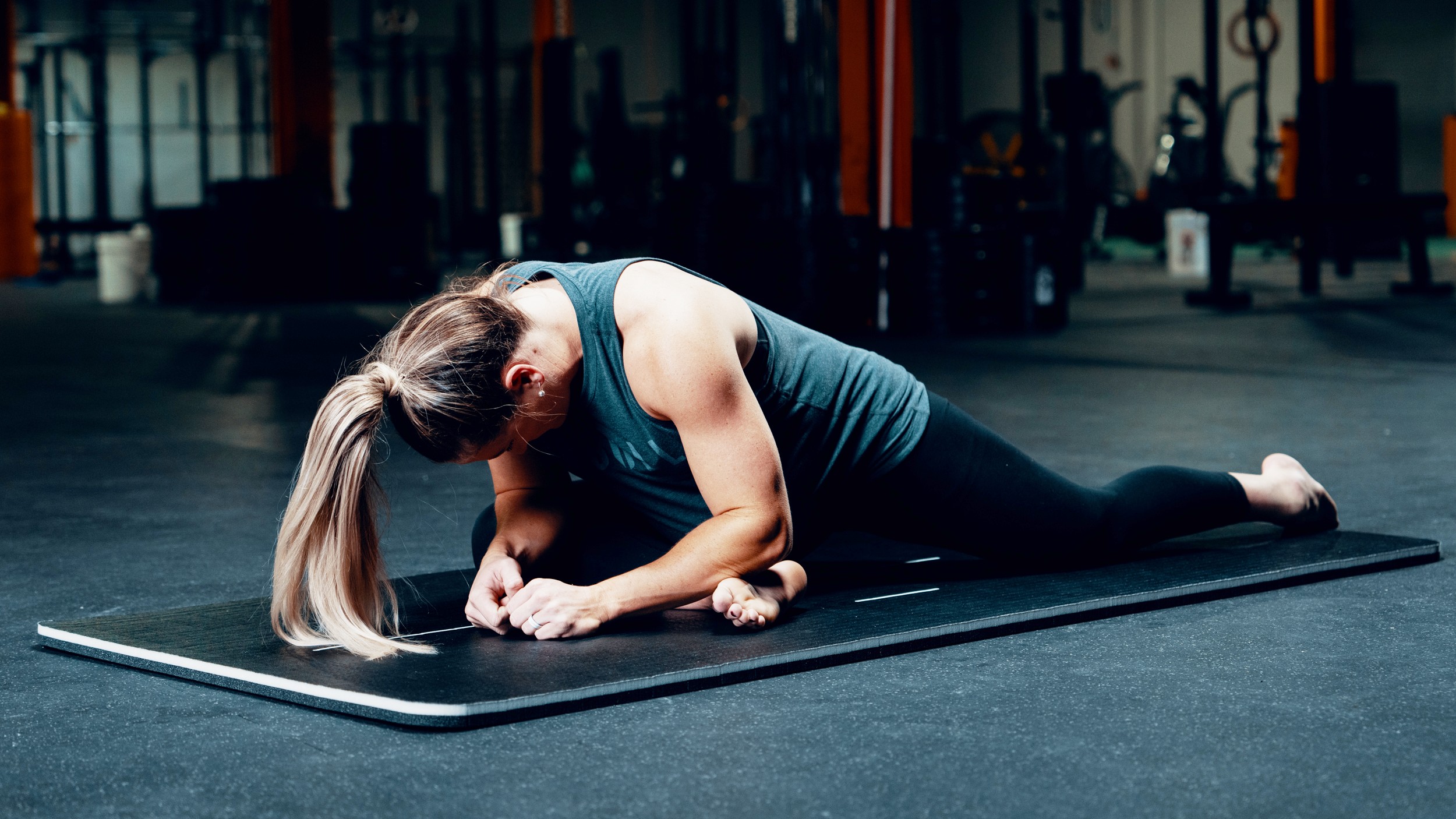
Here’s how to do pigeon pose in more detail, plus ways to scale the exercise.
- Start on your hands and knees
- Position your right leg forward so that your shin is perpendicular to your upper body
- Extend your left leg behind you, resting the top of your thigh and shin on the mat
- Keep your hips square to the top of your mat, then lean forward over your shin and knee
- Fold your chest toward your thigh if you can and lower your elbows to the mat in front of your shin
- Hold for 3 minutes, then gently release the stretch and switch sides.
4. Sumo squat hold
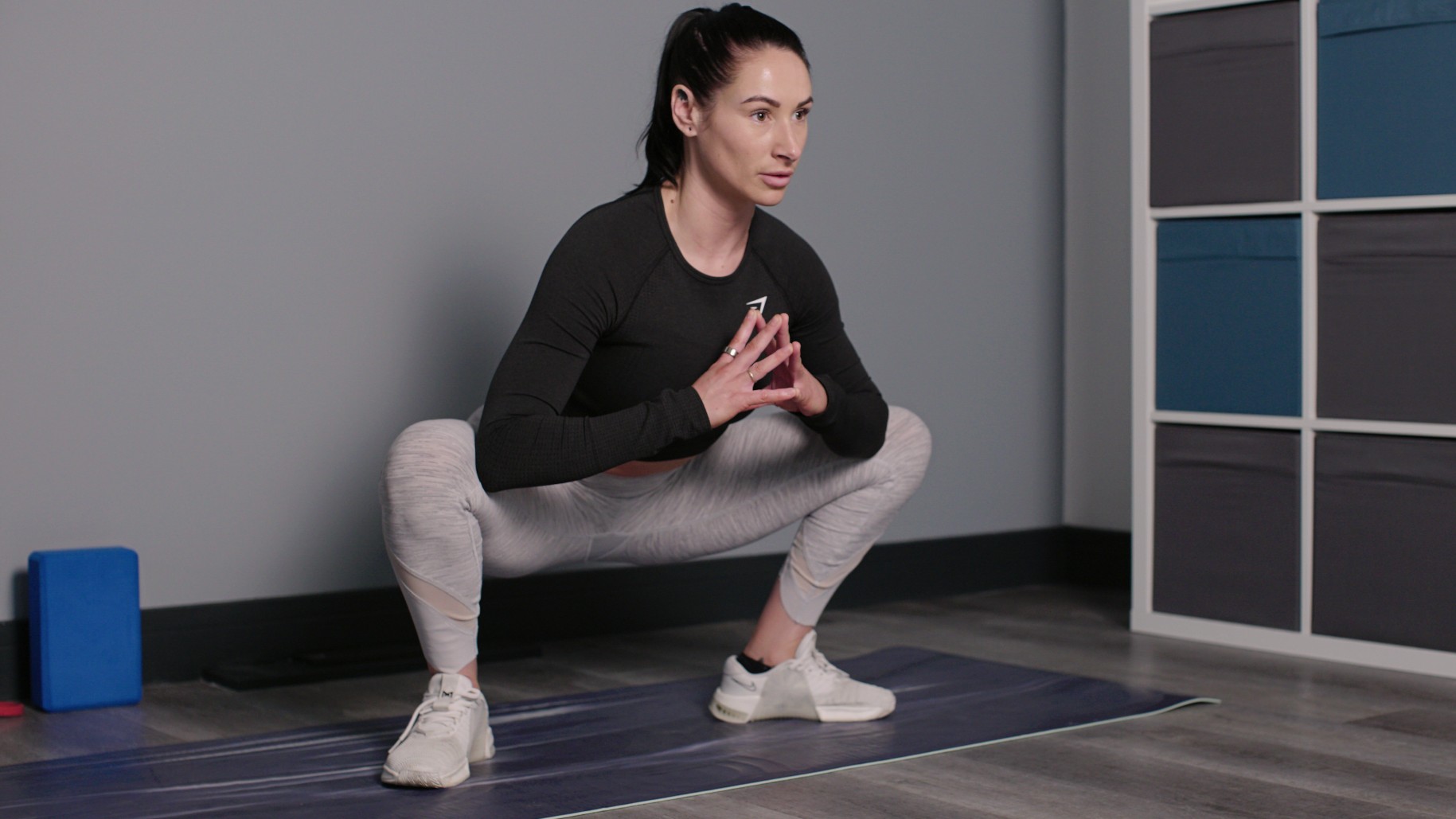
Learn how to do the sumo squat in more detail, plus we cover the static yogi squat, which is a very similar holding squat variation to the sumo squat hold.
- Stand with your feet slightly wider than shoulder-width apart and toes pointed outward at 45 degrees
- Lower into a deep squat position while maintaining a neutral spine and flat back
- Lift your chest and drive your knees outward, aligning with your toes
- Lower your bum toward the floor
- Either position your hands on the floor in front of you or bring them to prayer position. You can use your elbows to help drive your knees outward
- Hold for 4 minutes, staying as still as possible and breathing in and out through your nose.
If you have time after completing the stretches, spend 4 to 5 minutes in a resting position, laying on your back on the mat, for Savasana. This simply means relaxing your whole body into the mat, allowing your arms and legs to spread, closing your eyes and focusing on how your body feels for a few minutes.
The routine requires sitting in a series of holding positions for several minutes — a lot like a yin yoga class. During this time, focus on your breath and try to only breathe in and out through your nose. As you feel your muscles opening up, soften further into the pose and direct your attention to any areas of tightness.
You’ll likely find tightness more on one side of your body than the other. Don’t force your body into any positions, instead, find a place that is challenging and uncomfortable but not painful, and be aware of the difference between the left and right side over time.
Flexibility vs mobility: What’s the difference?
“Butt winking” is a common symptom of limited range of motion around the joints. At the bottom of a squat, butt winkers will often unknowingly slightly tuck the pelvis beneath the body, creating lumbar flexion.
While mobility and flexibility work can help fix your butt wink, it’s worth knowing the difference between the two methods when choosing which to prioritize.
Mobility exercises increase your range of motion, whereas passive stretching better improves muscle flexibility. While holding a stretch, muscles lengthen passively, whereas a mobility drill will actively work a joint through movement — think shoulder dislocations or hip rolls.
Combined, you’ll find less restriction in the joints and muscles, improving your ability to move freely without limitation from tightness and building strength, stability and motor control.
So while this stretching routine will help you sit deeper into your squats, think about adding lower-body mobility exercises to your routine, especially when warming up. Over time, you should notice a more mobile and flexible body while finding depth quicker and easier.
The bolder claims on stretching benefits might be misleading, but research published in the International Journal of Sports Physical Therapy still shows that stretching can build flexibility.
More from Tom's Guide
- Pilates instructor shares a 40-minute workout to 'wake up your deep core' and improve your posture
- I'm a personal trainer, this one-minute stretch opens your hips and builds lower body flexibility
- Develop healthy hips and strengthen your lower body with this 3-move stretching routine

Sam Hopes is a level 3 qualified trainer, level 2 reiki practitioner and senior fitness writer at Tom's Guide. She is also currently undertaking her Yoga For Athletes training course. Sam has written for various fitness brands and websites over the years and has experience across brands at Future such as Live Science, Fit&Well, Coach, and T3.
Having worked with fitness studios like F45 and Virgin Active, Sam now primarily teaches outdoor bootcamps, bodyweight, calisthenics and kettlebells. She also coaches mobility and stretching-focused classes several times a week and believes that true strength comes from a holistic approach to training your body.
Sam has completed two mixed doubles Hyrox competitions in London and the Netherlands and finished her first doubles attempt in 1:11.




